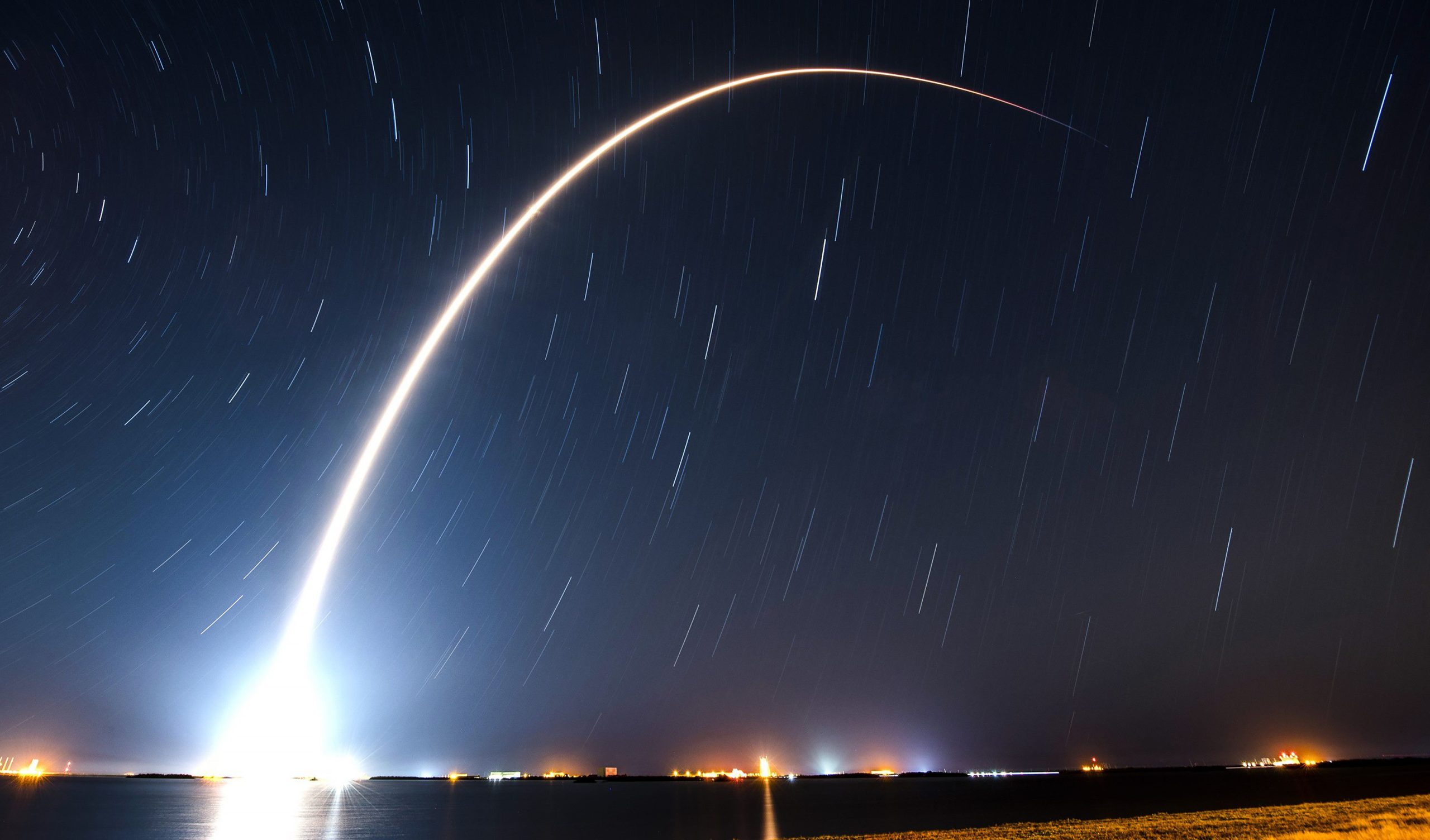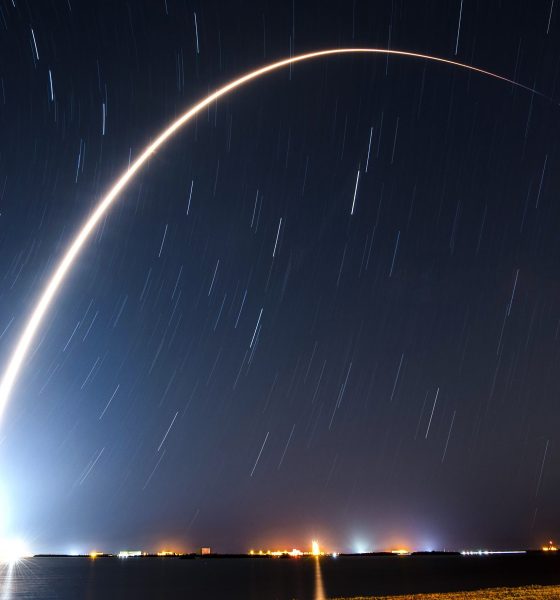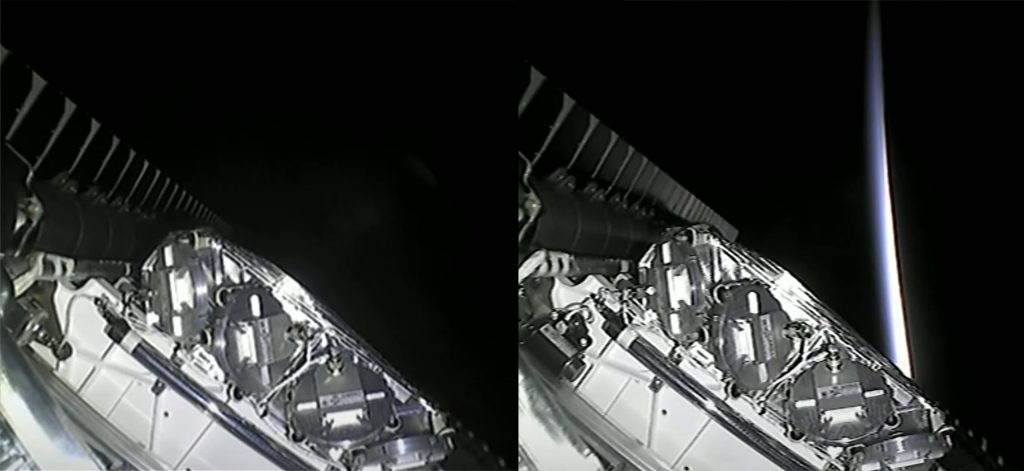

News
SpaceX aces 60th orbital launch of 2022
SpaceX has completed its 60th orbital launch of 2022, marking the first time the company has fully hit a public cadence target set by one of its executives.
By every possible measure, 2022 has been a groundbreaking year for SpaceX even when considering the vast list of achievements it’s racked up over the last half-decade. It owns and operates the largest satellite constellation in history by an order of magnitude. Its Starlink satellite internet service has secured more than a million subscribers less than two years after entering beta. It operates the only routinely reusable orbital-class rockets and orbital spacecraft currently in service. Its Falcon 9 workhorse has launched more in one year than any other single rocket in history. It’s regularly launching at a pace that hasn’t been sustained by any one country – let alone a single company – in 40 years. It’s managing that near-historic cadence while simultaneously recovering and reusing boosters and fairings that represent some 70% of the value of almost every rocket it launches.
And now, SpaceX can also proudly show that it was able to hit a launch cadence target that seemed impossibly ambitious when CEO Elon Musk first shared it nine months ago.
The update that's rolling out to the fleet makes full use of the front and rear steering travel to minimize turning circle. In this case a reduction of 1.6 feet just over the air— Wes (@wmorrill3) April 16, 2024
Exactly nine months later, SpaceX has just completed its 60th launch of 2022. 69 days after its last orbital-class launch, Falcon 9 booster lifted off for the 11th time with a somewhat mysterious batch of 54 Starlink satellites. A bit less than nine minutes after liftoff, B1062 touched down 660 kilometers (410 mi) downrange on SpaceX drone ship A Shortfall Of Gravitas (ASOG). Seconds prior, Falcon 9’s expendable upper stage reached orbit, shut down its lone Merlin Vacuum engine, and began slowly spinning itself end over end.
Nineteen minutes after leaving the ground, the stack of 54 Starlink satellites was released all at once, slowly spreading out like a splayed deck of cards. Over the coming hours, days, and weeks, those satellites will naturally spread out, deploy solar arrays, stabilize their attitudes, test their payloads, and begin climbing toward an operational orbit somewhere between 480 and 580 kilometers (300-360 mi) above Earth’s surface.
As previously discussed, SpaceX’s so-called “Starlink 5-1” mission raises a number of questions that the company’s launch webcast and communications unfortunately failed to answer. First and foremost, the “5-1” name is nonsensical. The only information SpaceX did disclose about the mission is that it’s the “first [launch] of Starlink’s upgraded network…under [a] new license,” implying – but not actually confirming – that “Starlink 5-1” is the first launch for the Starlink Gen2 constellation.
The orbit the launch targeted only matches one of the Gen2 ‘shells’ the US Federal Communications Commission (FCC) recently approved. Using a naming scheme that’s been consistent for a year and a half, “5-1” implies that the mission is the first launch of Starlink Gen1’s fifth ‘shell’ or group, which the orbit it was actually launched to explicitly makes impossible. It’s very odd that SpaceX did not explicitly call the mission what it actually is: the first launch of an entirely new Starlink Gen2 constellation. The name ultimately doesn’t matter much, but is now likely to create confusion given that SpaceX’s Starlink Gen1 constellation has a fifth shell that may begin launches in the near future.
Additionally, outside of a single obscure FCC filing submitted two months ago, it’s long been stated and implied that the Starlink Gen2 constellation’s main advantage over Gen1 was the much larger size of the Gen2/V2 satellites. But the satellites launched on “Starlink 5-1” appear to be virtually identical to all recent Starlink V1.5 satellites, which CEO Elon Musk once suggested were so cost-inefficient that they could risk bankrupting SpaceX in November 2021.

There is one obvious explanation for why SpaceX would launch ordinary Starlink V1.5 satellites in place of the larger V2 variants that will supposedly make the internet constellation more financially sustainable: a desire to add new customers as quickly as possible, no matter the relative cost. While a much smaller V1.5 satellite likely offers around 3-8 times less usable bandwidth than one of the larger V2 variants SpaceX is developing, it may still be true that a V1.5 satellite is better than nothing while larger V2 satellites are stuck behind development delays or waiting on SpaceX’s next-generation Starship rocket.
SpaceX will almost certainly want to replace any V1.5 satellites with V2 satellites when the opportunity arises, but in the meantime, V1.5 satellites launched as part of the Gen2 constellation may technically allow SpaceX to temporarily double the amount of bandwidth available where most people (and Starlink customers) live. Ultimately, that means that it makes a lot of sense for SpaceX to prioritize Gen2 launches. It doesn’t appear that SpaceX will go that far, but the Starlink Gen1 constellation is so far along that the company could easily leave the constellation as-is and prioritize Gen2 Falcon 9 launches for all of 2023 without risking an FCC penalty. SpaceX simply needs to finish its Gen1 constellation before April 2027 to avoid breaking those rules.
Instead, it looks like SpaceX will roughly split its launch and V1.5 satellite manufacturing capacity between Starlink Gen1 and Gen2 moving forward. That will let SpaceX significantly expand bandwidth where most customers live while also finishing the polar-orbiting Gen1 shells that will let the older constellation better serve maritime and aviation subscribers, and reach Starlink’s most remote customers.

News
Tesla hints at Starlink integration with recent patent
“By employing polymer blends, some examples enable RF transmission from all the modules to satellites and other communication devices both inside and outside the vehicle.”

Tesla hinted at a potential Starlink internet terminal integration within its vehicles in a recent patent, which describes a vehicle roof assembly with integrated radio frequency (RF) transparency.
The patent, which is Pub. No U.S. 2025/0368267 describes a new vehicle roof that is made of RF-transparent polymer materials, allowing and “facilitating clear communication with external devices and satellites.”
Tesla believes that a new vehicle roof design, comprised of different materials than the standard metallic or glass elements used in cars today, would allow the company to integrate modern vehicular technologies, “particularly those requiring radio frequency transmission and reception.
Tesla has recently filed a US patent application on integrating RF transparent materials into the roof structure.
“facilitating clear communication with external devices and satellites”
Tesla fleet is getting @Starlink connectivity integration soon. LFG @Tesla @elonmusk… pic.twitter.com/bLa8YtPLd1
— Chansoo Byeon (@Chansoo) December 9, 2025
Instead of glass or metallic materials, Tesla says vehicles may benefit from high-strength polymer blends, such as Polycarbonate, Acrylonitrile Butadiene Styrene, or Acrylonitrile Styrene Acrylate.
These materials still provide ideal strength metrics for crashworthiness, stiffness for noise, vibration, and harshness control, and are compliant with head impact regulations.
They would also enable better performance with modern technologies, like internet terminals, which need an uninterrupted signal to satellites for maximum reception. Tesla writes in the patent:
“By employing polymer blends, some examples enable RF transmission from all the modules to satellites and other communication devices both inside and outside the vehicle.”

One of the challenges Tesla seems to be aware of with this type of roof design is the fact that it will still have to enable safety and keep that at the forefront of the design. As you can see in the illustration above, Tesla plans to use four layers to increase safety and rigidity, while also combating noise and vibration.
It notes in the patent that disclosed examples still meet the safety requirements outlined in the Federal Motor Vehicle Safety Standards (FMVSS).
Starlink integrated directly into Tesla vehicles would be a considerable advantage for owners. It would come with a handful of distinct advantages.
Initially, the inclusion of Starlink would completely eliminate cellular dead zones, something that is an issue, especially in rural areas. Starlink would provide connectivity in these remote regions and would ensure uninterrupted service during road trips and off-grid adventures.
It could also be a critical addition for Robotaxi, as it is crucial to have solid and reliable connectivity for remote monitoring and fleet management.
Starlink’s growing constellation, thanks to SpaceX’s routine and frequent launch schedule, will provide secure, stable, and reliable internet connectivity for Tesla vehicles.
Although many owners have already mounted Starlink Mini dishes under their glass roofs for a similar experience, it may be integrated directly into Teslas in the coming years, either as an upgrade or a standard feature.
News
Tesla supplements Holiday Update by sneaking in new Full Self-Driving version
It seems Tesla was waiting for the Hardware 4 rollout, as it wanted to also deploy a new Full Self-Driving version to those owners, as it appeared in the release notes for the Holiday Update last night.

Tesla has surprised some owners by sneaking in a new Full Self-Driving version with the wide release of the Holiday Update, which started rolling out to Hardware 4 owners on Friday night.
Tesla has issued a controlled and very slow release pattern with the Holiday Update, which rolls out with Software Version 2025.44.25.5.
For the past two weeks, as it has rolled out to Hardware 3 and older Tesla owners, the company has kept its deployment of the new Software Version relatively controlled.
It seems Tesla was waiting for the Hardware 4 rollout, as it wanted to also deploy a new Full Self-Driving version to those owners, as it appeared in the release notes for the Holiday Update last night.
Tesla Full Self-Driving v14.2.1.25 made its first appearance last night to Hardware 4 owners who are members of the Early Access Program (EAP). It appears to be a slight refinement from FSD v14.2.1, which has been out for a couple of weeks.
Tesla v2025.44.25.5 Holiday update incoming
Also Full Self-Driving v14.2.1.25!!! pic.twitter.com/74D7S0UGXz
— TESLARATI (@Teslarati) December 13, 2025
Many owners welcome the new FSD version, us included, because we’ve been less than impressed with v14.2.1. We have experienced some minor regressions with v14.2.1, especially with Speed Limit recognition, Speed Profile tinkering, and parking performance.
As it stands, Full Self-Driving is still particularly impressive, but Tesla is evidently having an issue with some of the adjustments, as it is still refining some of the performance aspects of the suite. This is expected and normal with some updates, as not all of them are an improvement in all areas; we routinely see some things backtrack every once in a while.
This new FSD version is likely to take care of those things, but it also includes all of the awesome Holiday Update features, which include:
- Grok with Navigation Commands (Beta) – Grok will now add and edit destinations.
- Tesla Photobooth – Take pictures inside your car using the cabin-facing camera
- Dog Mode Live Activity – Check on your four-legged friend on your phone through periodic snapshots taken of the cabin
- Dashcam Viewer Update – Includes new metrics, like steering wheel angle, speed, and more
- Santa Mode – New graphics, trees, and a lock chime
- Light Show Update – Addition of Jingle Rush light show
- Custom Wraps and License Plates – Colorizer now allows you to customize your vehicle even further, with custom patterns, license plates, and tint
- Navigation Improvements – Easier layout and setup
- Supercharger Site Map – Starting at 18 pilot locations, a 3D view of the Supercharger you’re visiting will be available
- Automatic Carpool Lane Routing – Navigation will utilize carpool lanes if enabled
- Phone Left Behind Chime – Your car will now tell you if you left a phone inside
- Charge Limit Per Location – Set a charge limit for each location
- ISS Docking Simulator – New game
- Additional Improvements – Turn off wireless charging pad, Spotify improvements, Rainbow Rave Cave, Lock Sound TRON addition
Tesla also added two other things that were undocumented, like Charging Passport and information on USB drive storage to help with Dashcam.
Cybertruck
Tesla updates Cybertruck owners about key Powershare feature

Tesla is updating Cybertruck owners on its timeline of a massive feature that has yet to ship: Powershare with Powerwall.
Powershare is a bidirectional charging feature exclusive to Cybertruck, which allows the vehicle’s battery to act as a portable power source for homes, appliances, tools, other EVs, and more. It was announced in late 2023 as part of Tesla’s push into vehicle-to-everything energy sharing, and acting as a giant portable charger is the main advantage, as it can provide backup power during outages.
Cybertruck’s Powershare system supports both vehicle-to-load (V2L) and vehicle-to-home (V2H), making it flexible and well-rounded for a variety of applications.
However, even though the feature was promised with Cybertruck, it has yet to be shipped to vehicles. Tesla communicated with owners through email recently regarding Powershare with Powerwall, which essentially has the pickup act as an extended battery.
Powerwall discharge would be prioritized before tapping into the truck’s larger pack.
However, Tesla is still working on getting the feature out to owners, an email said:
“We’re writing to let you know that the Powershare with Powerwall feature is still in development and is now scheduled for release in mid-2026.
This new release date gives us additional time to design and test this feature, ensuring its ability to communicate and optimize energy sharing between your vehicle and many configurations and generations of Powerwall. We are also using this time to develop additional Powershare features that will help us continue to accelerate the world’s transition to sustainable energy.”
Owners have expressed some real disappointment in Tesla’s continuous delays in releasing the feature, as it was expected to be released by late 2024, but now has been pushed back several times to mid-2026, according to the email.
Foundation Series Cybertruck buyers paid extra, expecting the feature to be rolled out with their vehicle upon pickup.
Cybertruck’s Lead Engineer, Wes Morrill, even commented on the holdup:
As a Cybertruck owner who also has Powerwall, I empathize with the disappointed comments.
To their credit, the team has delivered powershare functionality to Cybertruck customers who otherwise have no backup with development of the powershare gateway. As well as those with solar…
— Wes (@wmorrill3) December 12, 2025
He said that “it turned out to be much harder than anticipated to make powershare work seamlessly with existing Powerwalls through existing wall connectors. Two grid-forming devices need to negotiate who will form and who will follow, depending on the state of charge of each, and they need to do this without a network and through multiple generations of hardware, and test and validate this process through rigorous certifications to ensure grid safety.”
It’s nice to see the transparency, but it is justified for some Cybertruck owners to feel like they’ve been bait-and-switched.








